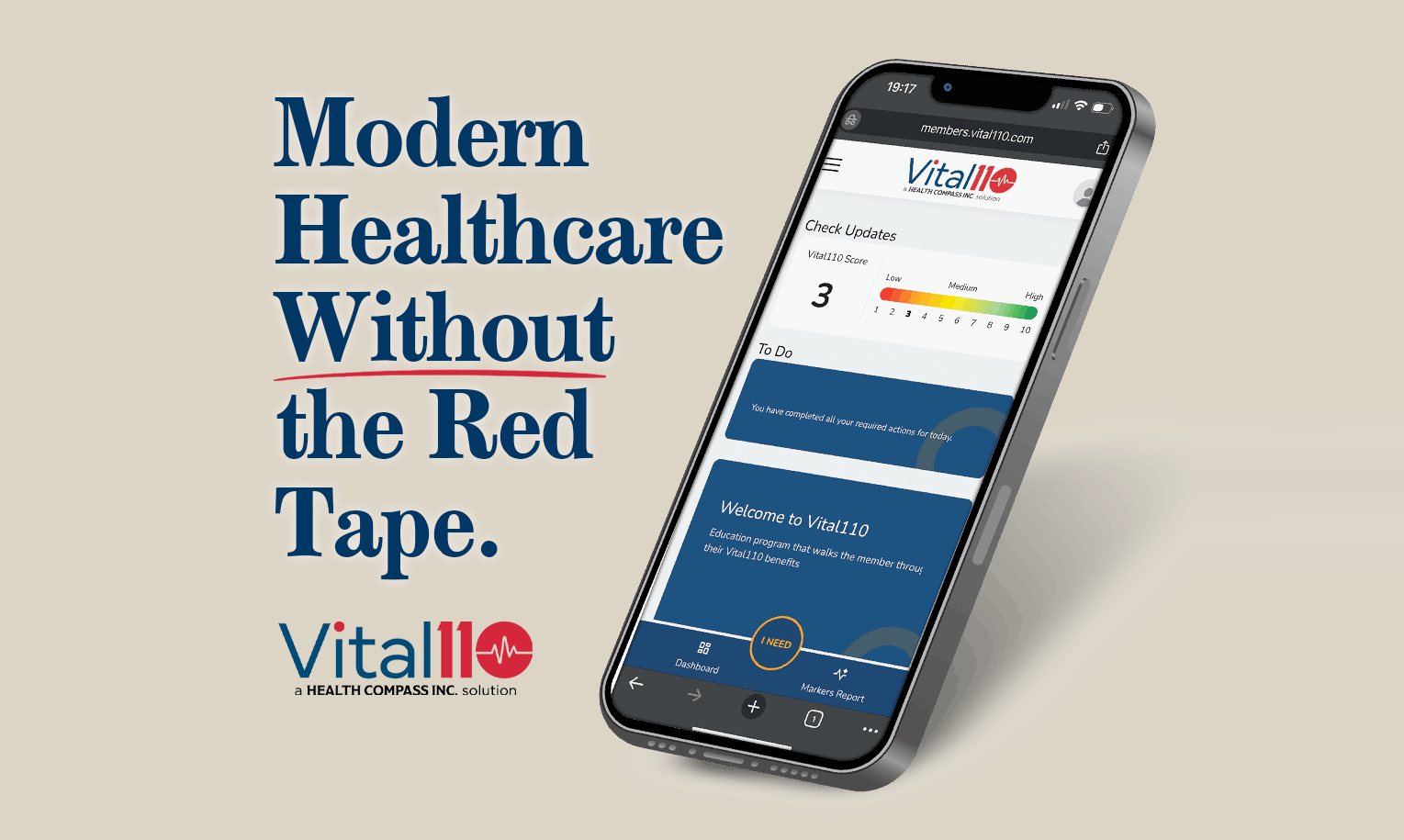Blog
The Hidden Summer Dip: Why Employee Engagement in Healthcare Benefits Slows—and How to Fix It

Summer may be prime time for beach trips and barbecues, but for HR leaders it can also signal a noticeable drop in employee engagement—especially when it comes to healthcare benefits. Vacations, flexible schedules, and warmer weather all contribute to what we call the “summer dip”: a seasonal slowdown in benefits usage, wellness program participation, and overall healthcare engagement.
When employees delay care or skip preventive steps during summer, it leads to bigger—and more expensive—issues in the fall. At Health Compass Inc., we see this trend across industries, and we help businesses counter it with proactive strategies and solutions such as the Vital110 platform. Below, we outline why summer engagement falls off, what it costs organizations, and five actionable ways to fix it before open enrollment season arrives.
Why Engagement Slows in Summer
1. Vacation Disruptions
With key team members out of office, ongoing initiatives—like wellness challenges, biometric screenings, or health coaching—can stall. Employees may also push off routine appointments until their schedules “settle down.”
2. Schedule Shifts and Childcare
Parents often juggle camps, sports, and variable work hours. Health tasks take a back seat, and the perceived inconvenience of scheduling care rises.
3. Perception of “Healthier” Season
Warm weather and increased activity can give employees a false sense of overall well-being, causing them to skip preventive visits or mental-health check-ins.
4. Budget Priorities
Between travel costs and summer activities, employees may tighten budgets and avoid out-of-pocket healthcare expenses—even small copays or lab fees—hoping to delay until fall.
5. Leadership Attention Drifts
Business owners and managers who are focused on mid-year reviews or strategic retreats may defer wellness communications, leaving benefits out of sight and out of mind.
The Cost of a Summer Engagement Dip
- Delayed Preventive Care: Skipped screenings lead to undetected issues and more costly treatments in Q4.
- Rising Claims: Employees who put off care over summer often end up in urgent care or ER settings later, spiking claims and premiums.
- Reduced Productivity: Stress, dehydration, and mental-health strain take a toll on focus and energy—undermining summer output.
- Lower ROI on Wellness Initiatives: Programs with low participation lose momentum and credibility.
According to the CDC, every dollar spent on preventive care can generate up to $3 in savings. When employees disengage over summer, businesses forfeit those returns and face higher costs in the second half of the year.
Five Ways to Fix the Summer Dip
1. Launch a Mid-Summer “Wellness Refresh” Campaign
Send a concise, visually engaging email or intranet post reminding employees of key benefits: free virtual care, mental-health support, and preventive screenings. Include links to quick-schedule portals so employees act immediately. In Vital110, employees can schedule lab work or virtual appointments in minutes—no phone calls needed.
2. Emphasize No-Cost and Convenience
Employees often delay care to avoid fees or travel. Highlight that Vital110 offers 24/7 virtual primary and urgent care with zero copays, plus no-cost lab tests and mental-health sessions. Reassure them that care fits into even the busiest summer schedule.
3. Promote “Micro-Wellness” Challenges
Instead of a three-month step program, run a two-week hydration or mindfulness challenge. Provide simple digital tracking via mobile apps and offer small incentives like company-branded water bottles or half-day Fridays.
4. Integrate Benefits Messaging into Vacation Reminders
When sending PTO approval emails or automated out-of-office reminders, include a sentence like: “Remember, you can connect with a doctor anytime via Vital110 while traveling. Stay healthy, wherever summer takes you.”
5. Conduct a Mid-Year Benefits Pulse Survey
Ask employees how well they understand and use current benefits. Use feedback to refine communication and address pain points before they escalate into claims costs. Survey results also guide Q4 open-enrollment strategy.
Case Study: A Quick Summer Turnaround
A 120-employee manufacturing firm in the Midwest noticed a 30% drop in telehealth visits and wellness engagement each summer. After switching to Health Compass Inc. and promoting Vital110’s no-cost virtual care and mental-health services, summer utilization climbed 40% within six weeks. Employee survey scores improved, and the firm saved an estimated $18,000 in avoidable urgent-care claims by year-end.
The Role of Leadership
Business owners and HR leaders set the tone. When leadership models healthy habits—taking mental-health days, completing annual physicals, encouraging water breaks—employees are more likely to follow suit. Pair leadership modeling with consistent, positive messaging and easy-access tools, and you’ll see engagement rise year-round.
Plan Ahead for Fall and Open Enrollment
Fixing the summer dip now means fewer headaches later. By encouraging preventive care and wellness engagement in July and August, you reduce the rush of last-minute appointments (and claims) in September and October. A proactive approach also delivers clearer data for designing next year’s benefits strategy.
Take Action Today
The hidden summer dip doesn’t have to drag your organization down. With the right tools and a plan that prioritizes prevention, you can maintain employee engagement—and even boost it—during the hottest months of the year.
Get a quote today and see how Health Compass Inc. can help your team stay healthy, productive, and engaged all year long.
‹ Back









